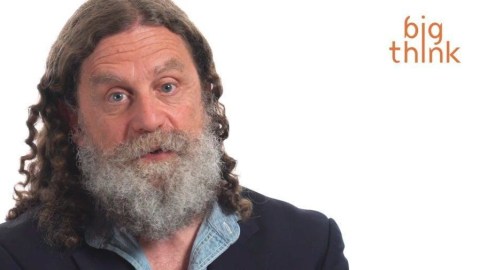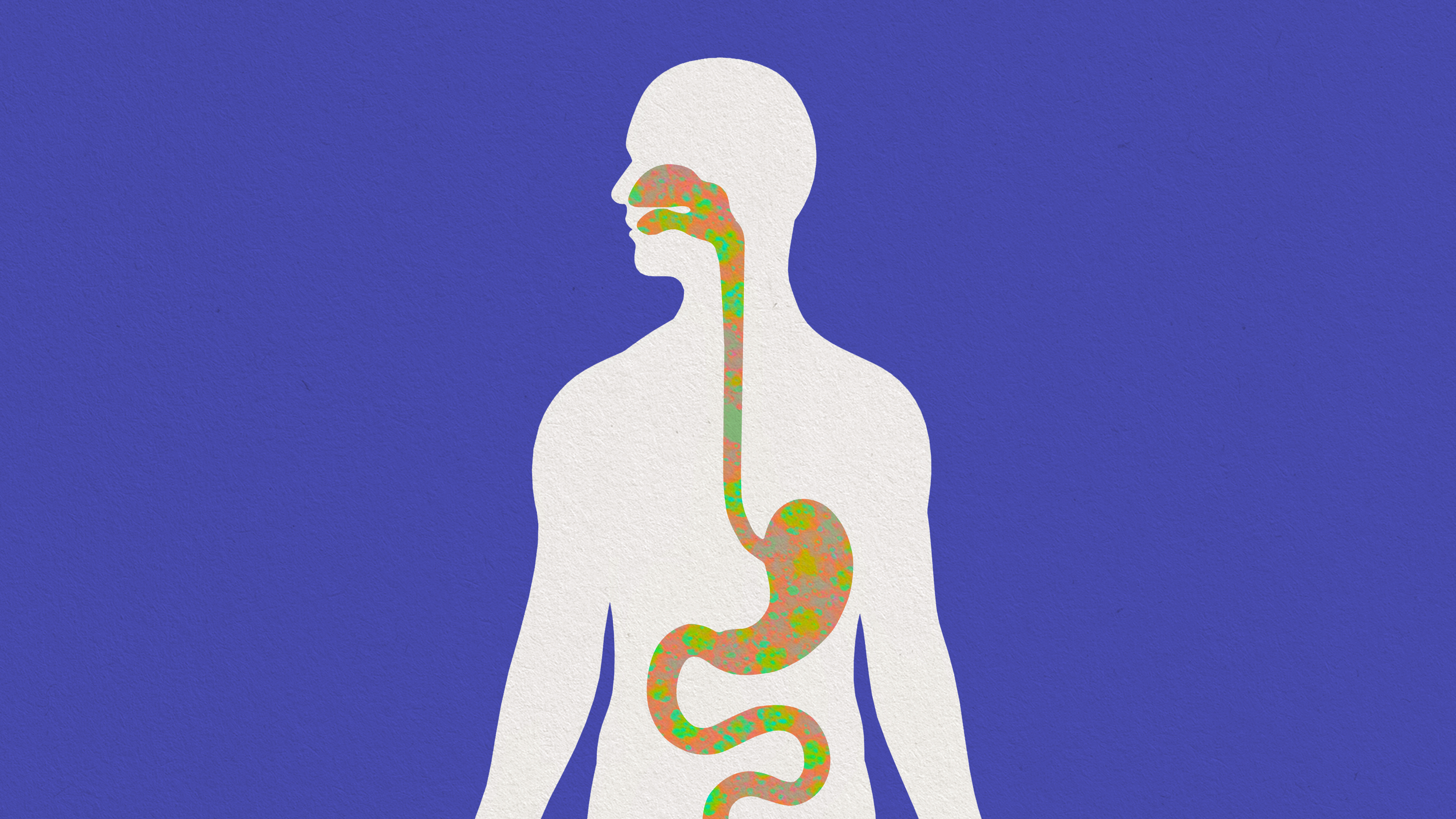4 highlights from Stanford’s Human Behavioral Biology course, available online for free

Robert M. Sapolsky / BigThink
- Stanford’s Human Behavioral Biology course explores the interconnections between physiology and behavior.
- Most of the course is taught by Robert M. Sapolsky, a professor of biology, neurology, and neurosciences at Stanford, and also an author and contributor to Big Think.
- Check out some highlights from the course below.
Imagine a 40-year-old man in the U.S. who is leading a quiet, suburban life. He’s been married 15 years and has two kids and two pets. One day at the office, a coworker says something about a baseball team, and our man takes exception. He punches his coworker in the face. This, according to everyone in the man’s life, was unusual behavior. Then, three months later, his wife discovers he’s been having an affair with a much younger woman. Finally, he absconds with thousands of dollars that he embezzled from his company, and his family never sees him again.
How could you explain what happened? A few possible options:
- He’s a bonafide creep.
- He’s going through a very immature mid-life crisis.
- He has a rare mutation in one gene in his brain.
This scenario is posed at the start of Stanford University’s Human Behavioral Biology course, available for free on YouTube. The course is led by Robert M. Sapolsky, a professor of biology, neurology, and neurosciences at Stanford, and also an author and contributor to Big Think. Sapolsky notes that the behavior described above is exactly what you’d expect in somebody with a rare neurological disease caused by one genetic mutation.
Over 25 lessons, most of which clock in at around 90 minutes, the college course explores how physiology and behavior interact — or, how our thoughts, emotions, and memories can influence seemingly unrelated bodily processes, and vice versa. The entire course is available on this playlist, but listed below are a few highlights to get you started.
The limits of categorical thinking
In the first lesson of the course, Sapolsky quickly reads a bunch of phone numbers, and instructs the students to write down as many as possible. For the first few examples, Sapolsky breaks up the phone numbers into the familiar “123-4567” pattern of which we’re accustomed. He then starts reading them in unusual patterns — “1-23-456-7” — in an attempt to confuse and disrupt categorical thinking patterns.
Sapolsky says that categorical thinking helps us make sense of the world and store information more easily. But he uses this example to get the class thinking about how paying too much attention to the boundaries in categorical thinking can cause you to lose sight of the big picture. (Sapolsky elaborates at 16:45 in the video.)
The “worst urban myth of evolution”
In the first lesson on behavioral evolution, Sapolsky introduces the class to applying Darwinian principles of evolution to behavior.
“The first thing we need to do is unlearn something we all learned back when, on all those National Geographic specials that would consistently teach us something about this aspect of evolution, and would always teach it to us wrong.”
Another scenario: A herd of 2 million wildebeest is migrating toward greener pastures. The herd eventually comes to a river. It’s teeming with crocodiles. The wildebeest stop. Then, one elderly wildebeest steps up to the riverbank, jumps into the water, and gets eaten by the crocodiles, creating an opportunity for the rest of the herd to safely cross.
Was this a heroic sacrifice? Sapolsky says that popular science programs like National Geographic have long claimed that animals tend to “behave for the good of the species,” an idea described by group selection. But this is the “worst urban myth of evolution,” he says.
If you look closely at the wildebeest scenario, you’d see something decidedly less heroic, the professor says: the herd is actually pushing the elderly wildebeest up to the front of the line. “All of the other ones are saying, ‘Yeah, get the old guy on the river!’ Sacrificing himself, my ass.”
“Animals behave in order to maximize the number of copies of genes they leave in the next generation,” Sapolsky continues. “Remember: not survival of the fittest, reproduction of the fittest.”
What to ask about any scientific study
In 2007, scientists published a major study showing that first-borns tend to have higher IQs than their siblings. The researchers controlled for nearly everything you might think of: differences in parental investment, parents who only have one child, age of the children when tested, etc. Media outlets ran with study, but lost in much of the coverage was a simple question: How big of a difference did the study find? The answer: 2.3 points.
“You sneeze while you’re taking an IQ test and have to wipe your nose for eight seconds afterward, and that’s going to cost you 2.3 IQ points,” Sapolsky says.
The study was a great example of how the results of a study can be impeccable and statistically reliable, and also unimportant. At the 9:30 mark in the 8th lesson, Sapolsky uses a “Chutes and Ladders” experiment to illustrate how to better interpret the results and methodology of scientific experiments.
Epigenetic programming
Near the end of the course’s first lesson on behavioral genetics, Sapolsky discusses how early experiences can shape long-lasting behavioral dispositions. These dispositions might appear to be genetically inherited. But Sapolsky notes that epigenetic research on rats shows that environmental factors — like mothering style — can influence how likely a pup is to express certain genes. Such genes might be responsible, say, for making receptors for stress hormones.
“Your early experience is going to cause life-long changes in your brain, which will make you more likely to reproduce the same experience for your offspring,” Sapolsky says around 135:15 in the video below.
What’s especially interesting is that this kind of epigenetic programming is reversible. Noting research conducted by Michael Meaney at McGill University’s Douglas Research Centre, Sapolsky says:
“You have a baby rat who spends the first of its infancy with some totally terrible, negligent, distracted mom,” but if you put that pup with a nurturing mom, “you can change the epigenetic pattern.”
Sapolsky notes how this kind of epigenetic programming looks and operates similar to genetics.
“All of this has two themes has two themes going on: Early experience causing really persistent differences in how this stuff works long after, and experience later on having the potential to reverse some of this. All of this stuff, once again, [could be] mistaken for genetic. What we have here is what appears to be a genetic style of what sort of mother rat you are, and it’s not genes, it’s the mothering style setting up the offspring for being a similar type of mother.”
To be sure, epigenetics is a complex field, and this is just a simple example of how the environment can influence gene expression. Throughout the entire course, Sapolsky routinely emphasizes that studying human behavior, or any scientific field, can be incredibly complex — so much so that it may seem like it’s impossible to solve anything. But “even though it’s complicated, you gotta do something,” Sapolsky says.
Part of studying a complicated field requires accepting the limitations of your era, as Sapolsky describes with an analogy about archaeology:
“A wonderful cool thing I heard about in archaeology…[is that] when you excavate a site, what you’re supposed to do is excavate about half of it,” he says. “You leave the other half for people in the future, with better techniques and better understanding, and leave something in tact there to keep from your, sort of, blundering hands.”
The course ends on a message about the assumed dichotomy between being compassionate and being scientific: “Go and do both,” Sapolsky says.





